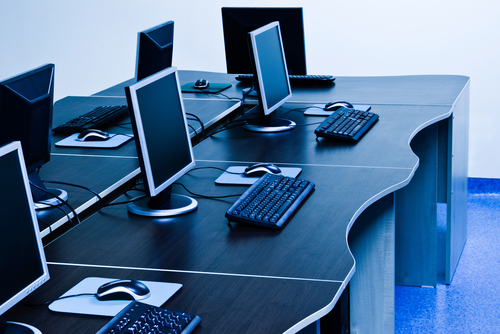Data makes the world go round. Computer cabling is what makes it all possible. Setting up a business network can be as simple as running a few cables to different computers. It can also be very complex. For the best speeds and connections, the important thing is to set up the infrastructure correctly with the right computer cabling, switches, and routers.

Benefits of Computer Cabling for Networks
You could start a small business using nothing more than a laptop and WiFi, but hopefully you’ll outgrow that system if you haven’t already. Computer cabling unlocks new possibilities, such as:
- The fastest data speeds
- More reliable internet connections
- Easy file sharing
- Large storage for databases
- Secure data online and offline
- Sharing printers and devices
In other words, networking allows you to work productively and efficiently. You can cut back on software costs, avoid the hassle of emailing files and searching for flash drives, and create a secure access system so that every employee can access the files they need.
Setting Up a Network
Larger businesses typically set up a server with numerous switches and routers. However, smaller organizations might just use a desktop computer as a server and connect other users’ computers with computer cabling. This is a decision between peer-to-peer or client-server networks.
Whatever kind of network you want, you’ll need to ask a commercial electrician to install computer cabling how and where you need it:
- Run a new cable wire in your home or office
- Install or move a cable jack to a convenient location
- Wire cabling through a wall or ceiling
- Upgrade to shielded cables
- Safely install cabling in an open office environment
Types of Computer Cabling
You might use a variety of cables for networking, such as SATA, FireWire, and USB to connect various devices. The actual computer cabling will be some form of Ethernet. The standard has been Cat5 cabling for a long time, but there are also faster and better protected versions.
Most small businesses can get everything they want from Cat5 or Cat5e computer cabling. These allow for download speeds of 100 or 1000 Mbps, which is probably as fast as your internet. Faster networking is possible with Cat6 or Cat7 Ethernet which stay fast at longer distances and can handle up to 10 Gbps speed. It’s also possible to install fiber optic cable throughout a building, but fiber is only recommended for large, tech-heavy businesses.
Computer Cabling Installation
Electricians can install new wiring and cabling wherever you need it. An electrician’s knowledge helps avoid interference and fire hazards. We have the tools and experience to install computer cabling neatly and efficiently. Contact us to schedule a free estimate.

